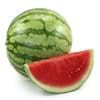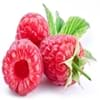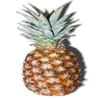Health Benefits
Arthritis prevention, Asthma treatment, Cancer prevention, Heart care, Prevents macular degeneration, Prevents rheumatoid
Cancer prevention, Diarrhea treatment, Muscle pain relief, Piles treatment, Prevents constipation, Skin cleansing, Ulcer treatment
General Benefits
Anti-inflammatory properties, Boosts immune system, Digestive aid, Healing of wounds, Maintains healthy cholesterol level, Strengthens bones
Controls blood pressure, Digestive aid, Maintains healthy cholesterol level, Strengthens bones
Skin Benefits
Anti-aging benefits, Hydrates skin, Skin revitalization, Treatment of acne, Treatment of dark spots
Anti-aging benefits, Hydrates skin, Skin rejuvenation
Hair Benefits
Good conditioner, Promotes longer and healthier hair, Softening mask, Treatment of dandruff
Prevents hair loss, Shiny hair, Softening mask
Allergy Symptoms
Abdominal pains, Carotenemia on excessive consumtion, Latex Allergy
Abdominal pains, Decrease in blood pressure, Dizziness, Hives, Itching of mouth, Lightheadedness, Swelling, Swelling of mouth, tongue or lips, Weak or racing pulse, Wheezing
Side Effects
Allergic reaction, Skin problems, Possibly unsafe during pregnancy
Headache, Intense headache, Tooth decay
Best Time to Eat
As a snack in the late afternoon, Don't consume at night and before bed, Don't eat after meal
As a snack in the late afternoon, Don't consume at night and before bed, Eat the fresh ones, avoid mixing with any other foods, don't eat after meal.
Vitamin B5 (Pantothenic Acid)
Vitamin C (Ascorbic Acid)
Vitamin K (Phyllochinone)
Phytosterol
Not Available
Calories in Fresh Fruit with Peel
Not Available
Calories in Fresh Fruit without Peel
Type
Melon, Tree fruit
Berry, Tropical
Season
All seasons
All seasons
Varieties
Coorg Honey Dew, Pusa Dwarf, Pusa Giant, Pusa Majesty, Pusa Delicious, Pusa Dwarf, Solo, Ranchi, Taiwan-785 and Taiwan-786
Cavendish Bananas, Lady Finger Bananas, Pisang Raja, Williams Bananas and Cooking Bananas
Color
Orange, Yellow
Green, Yellow
Inside Color
Orange
White
Shape
Oval
Curving Cylinder
Taste
Luscious, Sweet
Sweet
Origin
Mexico, Central America
Papua New Guinea
Soil Type
Rocky, Sandy, Well-drained
Well-drained
Climatic Conditions
Warm, Without frosts
Warm
Facts about
- Papaya seeds show contraceptive effects in male monkeys.
- Their seeds are used as a replacement for black pepper in some nations due to peppery taste.
- Papaya is known by funny names like paw paw or papaw and the mamao.
- As bananas contain potassium-40 which is radioactive isotope of potassium, bananas are radioactive.
- Bananas float in water.
- There are around 1000 varieties of bananas.
- Eating this fruit will cheer you up.
Other Countries
Brazil, Indonesia, Mexico, Nigeria
Brazil, Cameroon, China, Colombia, Ecuador, Ghana, Indonesia, Philippines, Uganda
Top Importer
United States of America
Europe
Top Exporter
Mexico
Ecuador
Botanical Name
Carica papaya
Musa acuminata and Musa balbisiana
Synonym
Not Available
Musa × dacca , Musa × sapidisiaca , Musa × sapientum
Subkingdom
Tracheobionta
Tracheobionta
Division
Magnoliophyta
Magnoliophyta
Class
Magnoliopsida
Liliopsida
Subclass
Dillenhidae
Liliidae
Order
Brassicales
Zingiberales
Family
Caricaceae
Musaceae
Species
C. papaya
M. acuminata , M. balbisiana
Generic Group
Papaya
Banana
Difference Between Papaya and Banana
We might think that Papaya and Banana are similar with respect to nutritional value and health benefits. But the nutrient content of both fruits is different. Papaya and Banana Facts such as their taste, shape, color, and size are also distinct. The difference between Papaya and Banana is explained here.
The amount of calories in 100 gm of fresh Papaya and Banana with peel is Not Available and 95.29 kcal and the amount of calories without peel is 43.00 kcal and 89.00 kcal respectively. Thus, Papaya and Banana belong to Low Calorie Fruits and High Calorie Fruits category.These fruits might or might not differ with respect to their scientific classification. The order of Papaya and Banana is Brassicales and Zingiberales respectively. Papaya belongs to Caricaceae family and Banana belongs to Musaceae family. Papaya belongs to Carica genus of C. papaya species and Banana belongs to Musa genus of M. acuminata , M. balbisiana species. Beings plants, both fruits belong to Plantae Kingdom.









